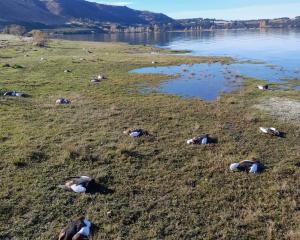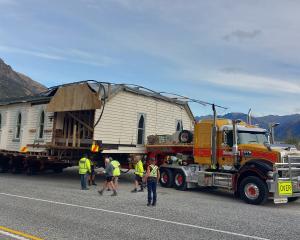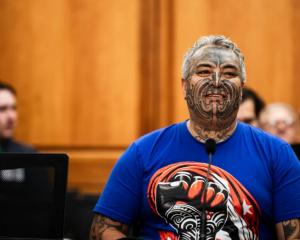New Zealanders have been warned not to go sightseeing in coastal areas and stay put on higher ground as a tsunami warning and beach and marine threat stays in place for many regions.
The alerts may stay in place until well into the afternoon, officials said today.
Emergency Management Minister Kiri Allan said it had been "an extraordinary morning for New Zealanders" around the country with many up from 2.30am worried about their homes and families.

For Aucklanders who are near beaches, there has not been any notification that they should be evacuated - but it has a beach and marine threat so they should stay off the beach and out of the water.
Those North Island residents who have had to "pick up their homes and evacuate" had done exceptionally well, said Allan.
They knew to head into the highlands when they felt a long or strong earthquake, she said.
The Government did not have timeframes for the evacuation. Allan warned it could be "quite lengthy" and even extend into this afternoon.
Allan said people weren't to evacuate lightly and so the assessments were done on who needed to leave their homes was done on a "risk to life" threat.
The entire town of Opotiki had been evacuated. Thousands of residents from other areas and towns had moved to higher ground.
She has been briefed by the national team in the bunker about the operations and called it a "dynamic event" that was constantly evolving.
Civil Defence in affected areas had been activated and were leading the responses on the ground, Allan said.
"People have done ... the right thing in the regions by picking up, packing up and by and large staying calm."
Those who have moved inland are being asked until there is the official all clear.
Allan said she knew people might get tired or bored but asked they not leave those areas.
National Emergency Management Agency controller Roger Ball urged people not to go sight-seeing in coastal areas. He said the first wave may not be the largest.
"The severity of currents and surges will vary over the period this morning that the warning is in effect for.
"Tsunami activity will continue for several hours and the threat must be regarded as real until this warning is cancelled."
Ball said strong and unusual currents and unpredictable surges near the shore may be expected in other parts of New Zealand.
"We're advising to play it safe. Stay off the beach and out of the water."
He asked that people stay 2m away from others if they are asked to evacuate.
He said current emergency advice overrode current Covid-19 alert level settings.
Follow any instructions regarding evacuation of your area, he said.
GNS scientist Bill Fry said there was no way today's earthquakes could have been predicted.
He said the first one came this morning without any significant warning.
"After that, when you see a big earthquake like this we know we're more likely to see another earthquake like that, so we're particularly vigilant.
Fry said he could comment on how the first and the last earthquake are related. The second one was bit more tenuous.
"When we have a big earthquake like the first one at 2am this morning we know in the region it's very proximal to that earthquake - the nearby region it's highly likely to have another earthquake, usually that's not bigger than the first which is what we've seen today but it does happen."
Fry said he has been in NZ for 13 years responding to large earthquakes and tsunamis and this is the first time this particular sequence has happened.
Allan said the warning system that went out this morning was targeted at those areas where there may be risk to life. It was expanded over the day.
"The advice we've received is that the warning system is adequate.
"The NEMA system doesn't operate in isolation, it requires people to carry that information."
She said the media helped in spreading that message.
People on the grounds seemed to have understood the messaging, but there will be ongoing reviews, she said.
Sirens are operated by local Civil Defence and management groups and local councils.
- RNZ/NZ Herald












